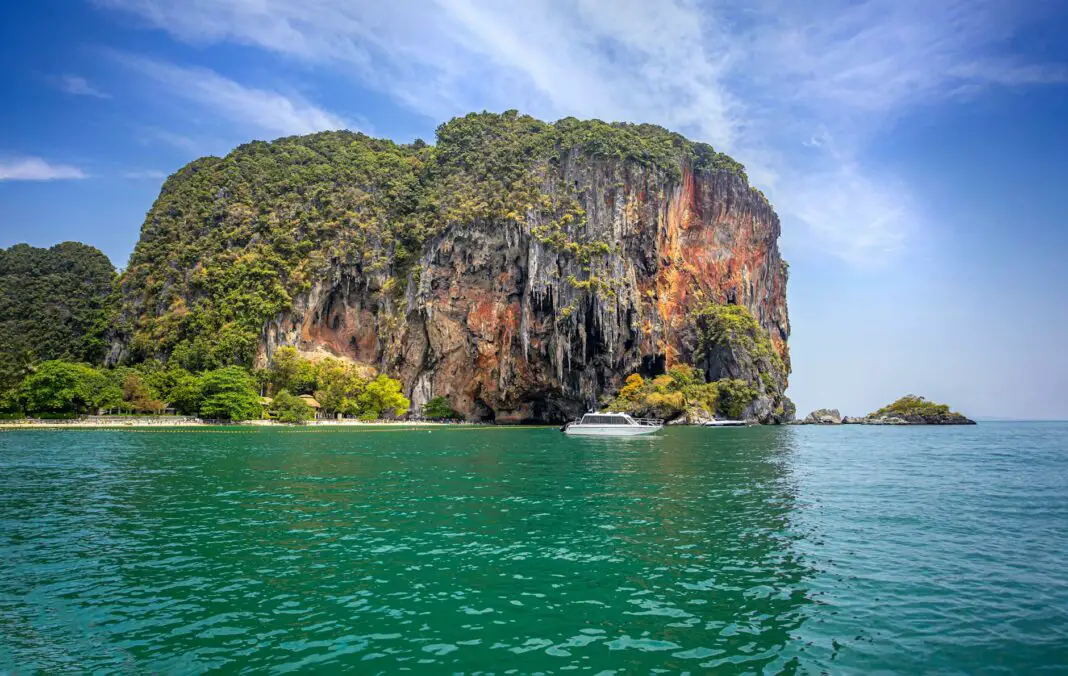Embarking on a trip to Thailand offers an unparalleled experience, captivating the senses with its breathtaking landscapes, rich culture, and warm hospitality. This stunning country is not only renowned for its pristine beaches and lush jungles but also for its vibrant cities filled with intricate temples and bustling street markets. However, beneath this beauty lies a pressing question: Is the mesmerizing allure of Thailand worth the environmental and cultural preservation sacrifices that often accompany mass tourism? This blog post dives deep into the captivating beauty of Thailand while examining the balance between tourism and conservation, ultimately enlightening readers on how they can enjoy this enchanting destination responsibly.
The interplay between tourism and conservation in Thailand raises vital points worth exploring. While the country thrives on tourism—contributing significantly to its economy—its natural areas and indigenous cultures face increasing pressure. Throughout this journey, we will navigate through Thailand’s stunning allure, the complexities of conservation, and how travelers can contribute positively to this breathtaking landscape without compromising its integrity. Join us as we unravel the layers of beauty and sustainability in Thailand.
Table of Contents
- Thailand’s Stunning Beauty
- The Challenge of Conservation
- Embracing Responsible Tourism
- Explore Thailand’s Hidden Gems
- Actionable Tips for Travelers
- Final Reflections
- Frequently Asked Questions
Thailand’s Stunning Beauty
Arriving in Thailand feels like stepping into a dream where teeming city life meets serene landscapes. The striking contrast of neon city lights in Bangkok juxtaposed with the tranquil beaches of Phuket paints a vivid picture of the country’s allure. Imagine strolling through bustling street markets filled with tantalizing aromas and exotic flavors while savoring the essence of Thai culture. Each temple, with its intricate designs and rich history, tells a unique story, captivating visitors and igniting a sense of wonder. The majestic beauty of Thailand’s natural wonders, from the emerald waters of Krabi to the lush mountains of Chiang Mai, showcases the diverse ecosystems that beckon travelers from around the globe. With every moment spent exploring, travelers find themselves more enchanted by Thailand’s exquisite charm, where each sunset over the beach becomes a breathtaking reminder of nature’s artistry.
Moreover, the delightful interactions with friendly locals add warmth to this captivating experience. Each smile exchanged and each story shared create lasting memories, further deepening the connection with the Thai way of life. The vibrant festivals celebrated throughout the year, adorned with dazzling lights and traditional music, immerse visitors in Thailand’s cultural richness. As the sun sets and the night comes alive, the energy of the night markets invites travelers to embrace the spirit of Thai nightlife, filled with laughter and joy. Such multifaceted beauty makes Thailand not just a destination, but an experience that lingers in the hearts of those who are fortunate enough to visit.
The Challenge of Conservation
Nonetheless, this paradise faces a pressing challenge, as the influx of tourists can place an immense burden on its delicate ecosystems and cultural heritage. Environmental degradation, habitat loss, and the erosion of traditional ways of life are becoming serious concerns that require urgent attention. Iconic spots like Maya Bay have made headlines in recent years due to over-tourism, resulting in temporary closures aimed at preserving the environment. Such instances highlight the importance of balancing economic growth with sustainable practices. Moreover, the culture of mass tourism often leads to a superficial understanding of Thailand, where visitors may overlook the significance of cultural preservation and the need for sustainable practices.
As travelers flock to Thailand seeking adventure and beauty, it is imperative to acknowledge their role in either harming or helping the country’s natural and cultural landscapes. Sustainable tourism initiatives, such as eco-friendly accommodations and responsible tour practices, are crucial in mitigating the negative impacts of tourism. Engaging with local communities respecting their traditions can nurture a deeper understanding and appreciation for the rich Thai heritage. By choosing to travel wisely, visitors can contribute significantly to preserving Thailand’s stunning beauty for future generations.
Embracing Responsible Tourism
Travelers can take actionable steps to become advocates for responsible tourism in Thailand, ensuring its beauty remains intact while they enjoy everything it has to offer. Educating themselves about local customs and traditions empowers visitors to engage in more meaningful interactions, fostering respect for the host culture. Additionally, opting for eco-friendly accommodations or supporting local businesses directly impacts the economic stability of communities, encouraging the preservation of traditional ways of life. Visitors should be mindful of their environmental impact by reducing plastic waste—carrying reusable bags and water bottles can significantly diminish pollution during trips.
Participating in community-based tourism activities not only enriches the travel experience but also aids in preserving cultural significance. From learning traditional crafts to joining local conservation efforts, travelers have the opportunity to leave a positive footprint. Spreading awareness among fellow travelers about the importance of preserving Thailand’s natural beauty can create a ripple effect, sparking change that reaches beyond mere personal experience. In a world where travel is often seen as a privilege, embracing the mantle of responsible tourism transforms each trip into a conscious effort to protect the very destination that captivates the hearts of millions.
Explore Thailand’s Hidden Gems
While the popular tourist attractions like Bangkok and Phuket never fail to impress, Thailand holds countless hidden gems waiting to be discovered. Exploring lesser-known destinations such as Pai and Koh Lipe unveils the extraordinary beauty of Thailand without the crowds often found in heavily touristed places. Pai’s serene valleys filled with hot springs and waterfalls offer a tranquil escape, allowing for a more authentic connection with nature. Travelers can engage with stunning landscapes while truly immersing themselves in local life, a contrast to the frenetic pace of larger cities.
Koh Lipe, on the other hand, presents a pristine tropical paradise where travelers can witness the untouched beauty of coral reefs and crystal-clear waters. Here, snorkeling becomes an adventure that highlights marine biodiversity, allowing interactions with vibrant sea life. Each hidden gem offers unique experiences that enhance the understanding of Thailand’s cultural and ecological landscape. Prioritizing these off-the-beaten-path locations not only supports conservation efforts but also fosters genuine connections with local communities, ensuring the preservation of this breathtaking culture and heritage.
Actionable Tips for Travelers
As you prepare for your trip to Thailand, consider incorporating these practical tips into your travel plans to create a lasting, positive impact. Begin by researching community-run initiatives that promote sustainable tourism practices, enabling you to support local economies directly. When booking accommodations, seek out eco-friendly options, as this choice directly contributes to sustainability efforts. Additionally, taking the time to learn basic phrases in Thai can enhance your interactions and demonstrate respect for the local culture. Even a simple greeting can go a long way in fostering goodwill among the locals.
Moreover, plan your itineraries to balance visiting popular attractions with engaging in local experiences. This mindful approach encourages a deeper appreciation for Thailand’s heritage while lessening the burden on overcrowded sites. Consider partaking in ecological activities, such as beach clean-ups or tree planting, which not only enrich your travel but also contribute positively to the environment. Each action taken, no matter how small, can accumulate to create a tremendous difference, ensuring that Thailand remains a breathtaking destination for future explorers.
Cherishing Thailand’s Beauty for Future Generations
Thailand’s resplendent beauty embodies a treasure trove of experiences that captivate the heart and soul of every traveler fortunate enough to visit. However, the allure comes with an urgent call for responsible tourism—a way to honor both the spectacular landscapes and the rich cultural heritage while ensuring they remain unblemished for generations to come. By adopting sustainable practices and promoting eco-friendly initiatives, travelers become active stewards of this incredible destination.
Ultimately, Thailand’s beauty lies not only in its stunning vistas but also in the spirit of its people and the vibrancy of its culture. As we navigate through the complex landscape of tourism and conservation, we embrace the responsibility to protect this extraordinary legacy. Together, we can ensure that the captivating charm of Thailand continues to inspire wonder and admiration for years to come.
Frequently Asked Questions
- What is the best time to visit Thailand? The ideal time to explore Thailand is during the cool and dry season, which runs from November to February. During these months, the weather is pleasant, making it perfect for outdoor activities and beach visits.
- How can I travel responsibly in Thailand? You can travel responsibly by opting for eco-friendly accommodations, supporting local businesses, practicing responsible wildlife tourism, and avoiding single-use plastics.
- Are there any hidden gems to explore in Thailand? Absolutely! Some hidden gems include Pai, Koh Lipe, and Sukhothai. These less-touristy spots offer stunning landscapes and authentic cultural experiences.
- What are the must-try foods in Thailand? Do not miss out on trying Pad Thai, Tom Yum Goong, Som Tum, and Mango Sticky Rice, as these dishes offer a delightful taste of Thailand’s rich culinary culture.
- What are the cultural etiquettes I should be aware of in Thailand? When visiting temples, dress modestly, remove your shoes, and show respect to Buddha images. It’s also polite to greet individuals with a ‘wai’ (a slight bow with palms together).
Image Credit: Pexels





